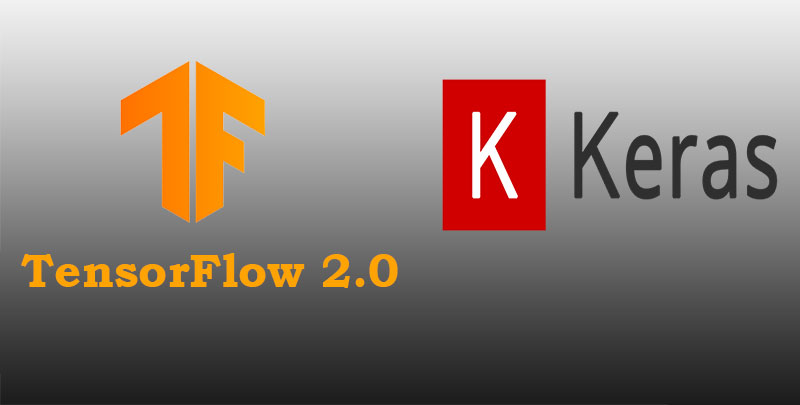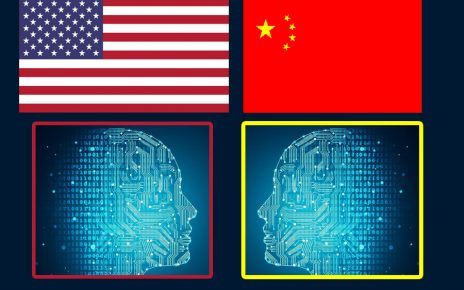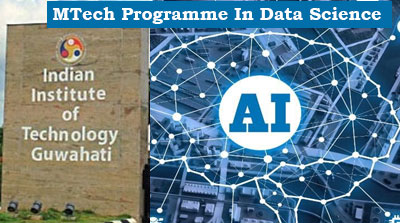TensorFlow 2.0 features – Google releases TensorFlow 2.0 with exciting AI features, Keras is now tightly integrated with TensorFlow 2.0
Google released TensorFlow 2.0 last month with promises to provide top features in the new TensorFlow for developing next generation deep learning models. Developers around the world are excited about the TensorFlow 2.0 final version which is now available for production use. The TensorFlow 2.0 is released with tight integration with Keras API, which is one of most popular high level deep learning model development framework. Now you can take full advantage of high level Keras model and TensorFlow 2.0 for developing, training and deploying your world class deep learning models.
The most important features that come with TensorFlow 2.0 are tight integration with Keras, eager execution, privacy aware model training, fast model training and API cleanup. TensorFlow 2.0 is simplifying model coding, testing and deployment process. Here developer can do a lot of thing with much cleaner and small size code. The eager execution support simplified model development, training and debugging process.
Let’s discuss the key features that TensorFlow 2.0 brings for the developers.
TensorFlow 2.0 comes with tighter integration with Keras library
The Keras library comes with the high API for developing and training deep learning models. Now TensorFlow 2.0 provides in-built support for the Keras library and developers can use it for quickly prototyping, training and deploying machine learning models very easily from their TensorFlow 2.0 code. This gives a lot of flexibility and speed to the data scientists and deep learning experts. TensorFlow 2.0 back end can be used for large scale model training and deployment using GPU (and GPU clusters).
Keras is now default high level API for TensorFlow 2.0 which makes it easier for developers to get started with the TensorFlow library. The high level API of Keras provides easy way for the developers and researchers to use TensorFlow 2.0 quickly for their projects. It is also possible to make own model with low level API of Keras and TensorFlow with ease and less confusion.
Eager execution is enabled by default in TensorFlow 2.0
This another good feature introduced in TensorFlow 2.0 which removes the concept of graph as used in TensorFlow 1.x and it helps in easing the life of developers. Earlier developer used to design the computational graph and then runs the graph in the Session object. It was very difficult to debug and maintain the model. TensorFlow execution model helps in running and debugging code without building graph. Now with this feature TensorFlow 2.0 program looks like a simple Python program which executed line by line. Developers can simple import the tf.keras model and other objects of Keras in their project.
Distribution Strategy API for distributed training of model
TensorFlow 2.0 also introduced Distribution Strategy API which is abstraction for running the distributed training over multiple processing units while training model with large data sets. This API is introduced for distributed training of existing model with little or very less code change. In TensorFlow 2.0 the API is tf.distribute.Strategy, which can be used in the code for distributed training of the model.
Developers can develop model using Keras high level model and other components. Now training a model is easy and can be initiated by calling the model.fit() method. Code developed in TensorFlow 2.0 takes full advantage of Distributed training and data scientists can train their model with large datasets on the distributed compute units.
Support for multi GPU and Cloud TPUs
TensorFlow 2.0 comes with the full support for multi-GPU which can be used for training model over multiple GPU’s. New TensorFlow also provides experimental multi worker and Cloud TPU support. TensorFlow 2.0 also promises 3 times faster training using combination of NVIDIA’s Volta and Turing GPUs.
TensorFlow 2.0 also comes with the tight integration with NVIDIA TensorRT platform which is used for high-performance deep learning.
Support for saving trained model into language-neutral format
TensorFlow 2.0 comes with the support for saving the trained Machine Learning model into language-neutral format and this feature is one of the most awaited features introduced in this version.
One you trained your model you can save it into language-neutral format and then use it in any of the TensorFlow ecosystem projects like TensorFlow Lite, TensorFlow JS, TensorFlow Serving, and TensorFlow Hub. All these TensorFlow ecosystem projects can use ML model saved in language-neutral format for running the prediction. This gives great advantage to the developers in developing ML model which can run on wide variety of platform and systems.
Thanks for the language-neutral format which allows developers can use TensorFlow 2.0 over the cloud, web, browser, Node.js, mobile, and embedded systems.
Lots of API simplification in TensorFlow 2.0
TensorFlow 2.0 is well organized and many API’s have been removed or renamed to achieve better consistency. There are many API’s removed from this distribution for example tf.app, tf.flags, and tf.logging API not available now in favor of abseil-py.
TensorFlow 1.x developers might find these change little disturbing but after using TensorFlow 2.0 for certain period they will find this version of TensorFlow very productive.
Another major change is the use of Keras library as high level API for quick development, training and deployment of model.
Summary of changes and improvements in TensorFlow 2.0
- New APIs in TensorFlow
- Removal of many API’s
- Default support for Eager execution – Python like execution of code
- Full control of variable and easy debugging of code
- Introduction to function in place of graph
- Introduction to autograph in TensorFlow 2.0
- Keras comes with TensorFlow 2.0 – Use of Keras library for developing machine learning model
- Fast training of model on GPU
- Support of distributed Training
- Experimental multi worker and Cloud TPU support
- Support for saving model in language-neutral format
This release of TensorFlow comes with features that can be used for developing, training and deploying large Machine Learning model with ease. TensorFlow 2.0 is developed to ease the development of machine learning model with less or easy coding. Data Scientists and Researchers can use high level Keras API’s for fast testing of model.Ads: Learn TensorFlow 2.0 and master this deep learning library.
19,120 total views, 4 views today



